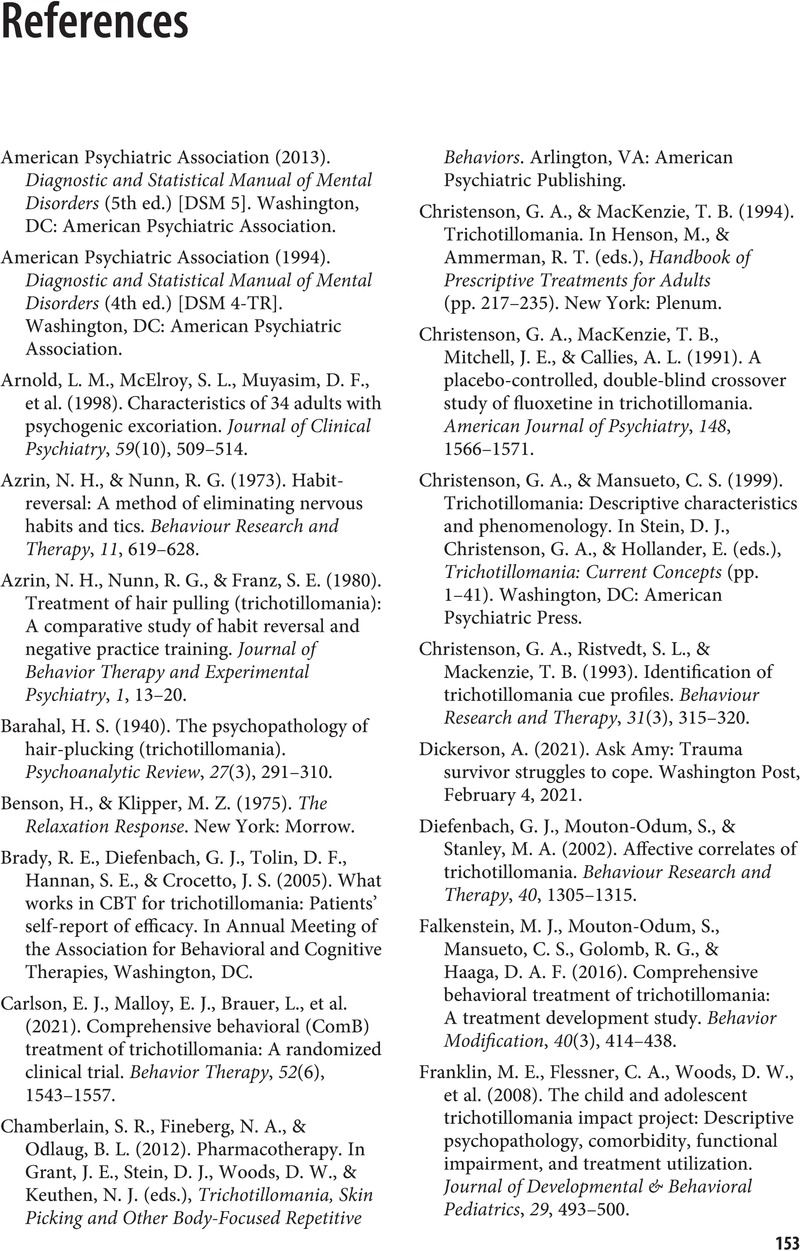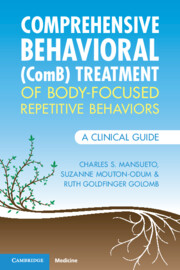Book contents
- Comprehensive Behavioral (ComB) Treatment of Body-Focused Repetitive Behaviors
- Comprehensive Behavioral (ComB) Treatment of Body-Focused Repetitive Behaviors
- Copyright page
- Contents
- Foreword
- Acknowledgments
- Introduction
- Chapter 1 Overview of Body-Focused Repetitive Behaviors
- Chapter 2 Clinical Presentation of Body-Focused Repetitive Behaviors
- Chapter 3 Overview of Body-Focused Repetitive Behaviors Treatment
- Chapter 4 Getting Started with Comprehensive Behavioral Treatment
- Chapter 5 Gathering Information
- Chapter 6 Implementing Appropriate Interventions
- Chapter 7 Implementation of Specific Interventions
- Chapter 8 Self-Care Strategies for Client Support during Treatment and after Termination
- Chapter 9 Working with Children and Families
- Chapter 10 Troubleshooting Difficult Issues and Moving Forward with Treatment
- Appendix
- References
- Index
- References
References
Published online by Cambridge University Press: 07 September 2023
- Comprehensive Behavioral (ComB) Treatment of Body-Focused Repetitive Behaviors
- Comprehensive Behavioral (ComB) Treatment of Body-Focused Repetitive Behaviors
- Copyright page
- Contents
- Foreword
- Acknowledgments
- Introduction
- Chapter 1 Overview of Body-Focused Repetitive Behaviors
- Chapter 2 Clinical Presentation of Body-Focused Repetitive Behaviors
- Chapter 3 Overview of Body-Focused Repetitive Behaviors Treatment
- Chapter 4 Getting Started with Comprehensive Behavioral Treatment
- Chapter 5 Gathering Information
- Chapter 6 Implementing Appropriate Interventions
- Chapter 7 Implementation of Specific Interventions
- Chapter 8 Self-Care Strategies for Client Support during Treatment and after Termination
- Chapter 9 Working with Children and Families
- Chapter 10 Troubleshooting Difficult Issues and Moving Forward with Treatment
- Appendix
- References
- Index
- References
Summary

- Type
- Chapter
- Information
- Comprehensive Behavioral (ComB) Treatment of Body-Focused Repetitive BehaviorsA Clinical Guide, pp. 153 - 156Publisher: Cambridge University PressPrint publication year: 2023



